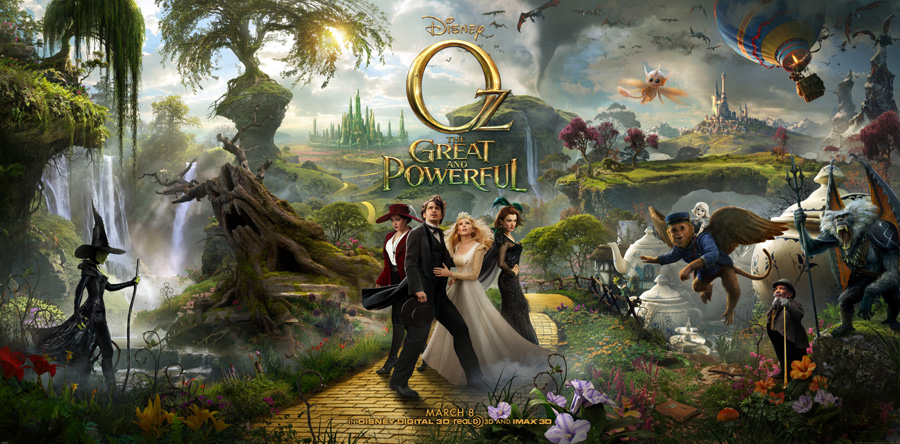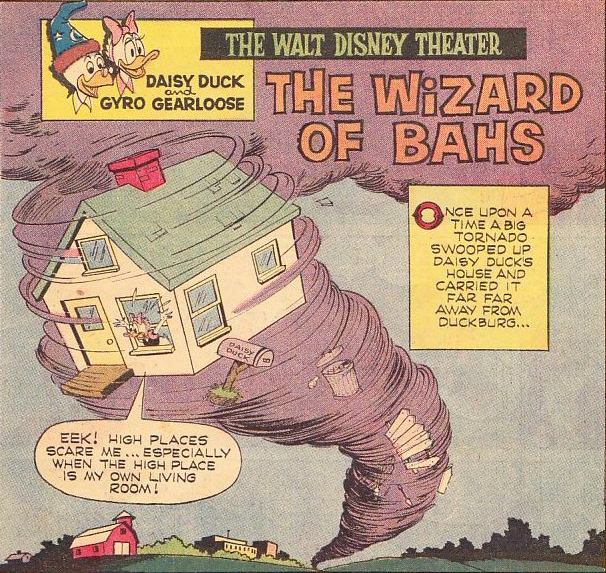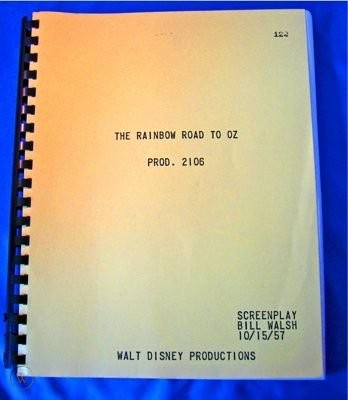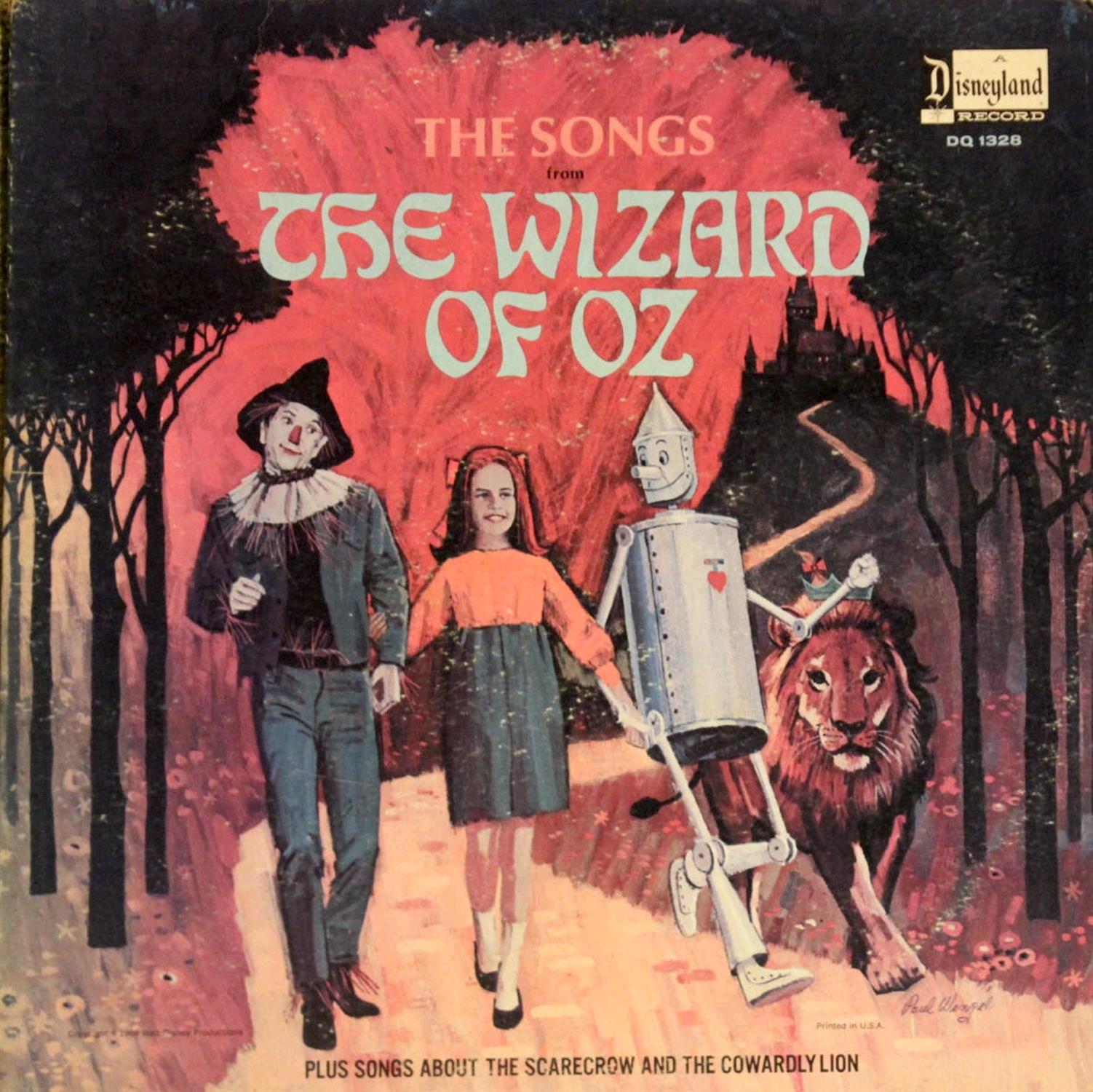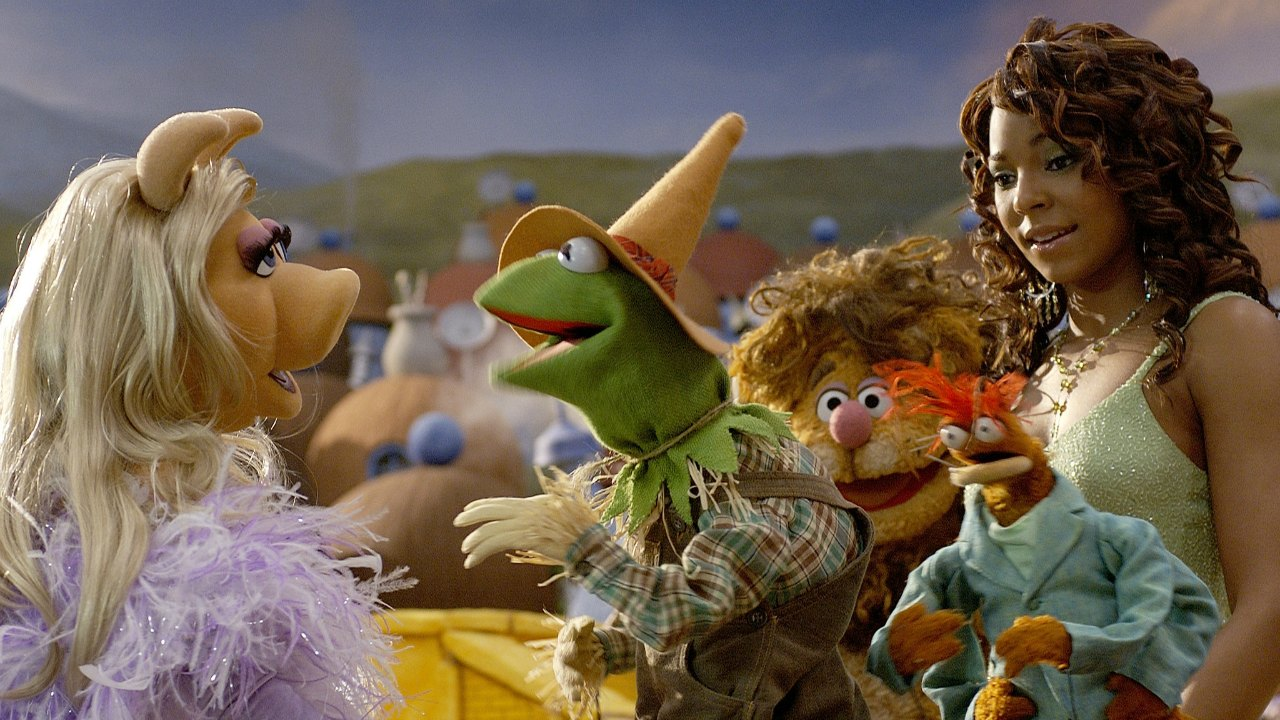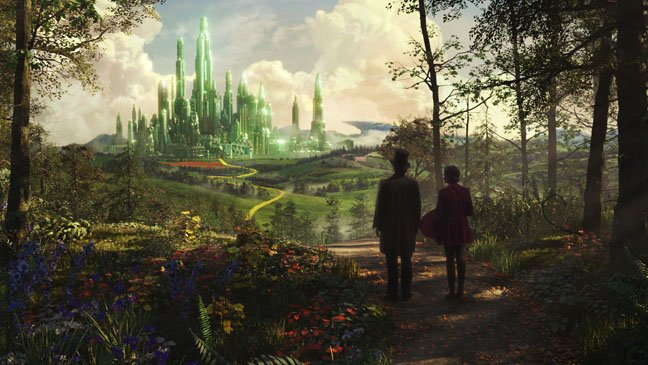Freeform 30 Days of Disney Day 13: Disney Follows the Yellow Brick Road to Oz
When you think of “Oz,” what comes to mind first? Odds are you see imagery from MGM’s 1939 musical classic starring Judy Garland, which celebrates its 80th anniversary this year. If that’s not what pops into your head first, perhaps it's the original L. Frank Baum books, Universal’s Broadway hit Wicked, or the HBO prison drama if you’re weird like that. But if none of the above apply, then it has to be some of Disney’s Oz projects. In celebration of Oz the Great and Powerful airing tonight on Freeform’s “30 Days of Disney,” let's take a look at the history of Disney and the magical land beyond the rainbow.
The One that Started it All
Did you know that Walt Disney wanted to adapt L. Frank Baum’s The Wonderful Wizard of Oz as an animated feature? Before production wrapped on Snow White and the Seven Dwarfs, Walt pursued the rights and was sad to learn that the rights to the first book were sold to Samual Goldwyn (of Metro-Goldwyn-Mayer, aka MGM) in 1935. Ironically, the MGM film was very much influenced by Snow White, borrowing quite a few plot devices and even attempting to make the Wicked Witch of the West as beautiful as the Evil Queen before changing their direction. The end result may be different enough to avoid much comparison, but it’s not hard to see the influence that Snow White had on The Wizard of Oz. The voice of Snow White herself, Adrianna Caselotti, is in the MGM film as a voice in the song “If I Only Had a Heart” (she sing’s “Wherefore art thou Romeo?”). Another fun Snow White/Oz connection came in the form of ABC’s Once Upon a Time, where Regina (Evil Queen) and Zarina (Wicked Witch of the West) were long-lost sisters.

MGM's "Evil Queen" Wicked Witch wardrobe test.
The Wizard of… Bras?... Bahs?
Not one to give up on a good idea, Walt Disney revisited Oz in 1954 when he acquired the rights to the eleven available Oz books, excluding The Wonderful Wizard of Oz. The first tangible evidence of Disney owning the rights came in the form of a short lived attraction inside of a gift shop on Main Street U.S.A. at Disneyland. “The Wizard of Bras” was a mechanical man who played a pre-recorded spiel about the history of feminie garments inside the Hollywood-Maxwelle Intimate Apparel shop for ladies only. The original location is significant for having a porch with rocking chairs for men to wait while their lady friends shopped. The store closed in January 1956 and the wizard went with it, just six months after the park opened, but the porch with rocking chairs is still there. Even stranger, a comic called “The Wizard of Bahs” was produced in 1966 starring Daisy Duck as Dorothy with Snow White characters in the cast such as the Dwarfs as Munchkins and the hag as the Wicked Witch of the West. The world of Oz was also the basis for some blue sky Disneyland attractions that never got built during this same period.
(photo source: Filmic Light)
The Rainbow Road to Oz
If you’re a diehard Disney fan, then you already know that Walt Disney never made his Oz film, but he did come close. He even purchased the rights to an additional Oz book from another studio to ensure that nobody beat his film to the market. What began as a two-part TV special outgrew its scope and evolved into a multi-million dollar theatrical film called The Rainbow Road to Oz, which was to be an original musical that combined elements from several Oz books with a new musical score by Buddy Baker and Tom Adair. The plot found Dorothy returning to Oz to find that the Cowardly Lion has become a tyrant under an evil spell, overthrowing Ozma as the ruler of the land. Dorothy would’ve reunited with the scarecrow and new friends Ozma and the Patchwork Girl to break the spell and making things right again. Walt Disney went as far as to feature the upcoming project on the Disneyland Fourth Anniversary Show television special in 1957 where the Mouseketeers auditioned for the film and performed two musical numbers, “Patches” and “Rainbow Road to Oz.”
Walt Disney was reportedly unhappy with the outcome and after scrapping the live action project, he revisited the concept of making an animated film by passing it to the animation department. A 1959 interoffice memo giving the animators instructions for the project sold at auction several years ago, along with a copy of the live action script by Bill Walsh. More information is found in They Drew as They Pleased, Vol. 5 where Ken Anderson took a stab at the story before it was shelved for good.
All was not lost for Disney’s Oz project, with Ray Bolger and Annette Funicello being recast in lead roles in another musical comedy based on a fairytale, Babes in Toyland.
(Photo source: Worthpoint)
Disneyland Records
Holding the rights to the Oz stories allowed Disneyland Records to have a little fun with them. Walt Disney Presents The Story of the Scarecrow of Oz was released in 1965 based on the Baum book of the same name and narrated by Ray Bolger (of Babes in Toyland fame… and MGM’s The Wizard of Oz). It featured a new song called “Happy Glow” and a children's chorus version of “Somewhere Over the Rainbow.” Two follow ups came in 1969 with The Story and Songs of the Wizard of Oz, featuring Disney recordings of five songs from the MGM film, and The Story and Songs of the Cowardly Lion of Oz which included six songs, some rumored to be intended for The Rainbow Road to Oz including “Living a Lovely Life,” “Trouble in Oz,” “The Ozphabet,” “Just Call Smarmy,” “The Puppet Polka,” and “If You’ll Just Believe.” That same year, a musical album called The Songs from The Wizard of Oz was released which included all of the songs from these three story albums. The final Disney Oz record came in 1970 with The Songs and Story of the Tin Woodman of Oz with three original songs written for the release.
Return to Oz
The rights to the Oz books that Walt Disney acquired began to slowly enter public domain between 1983 and 1996 and pressure was on to do something with them before they became fair game at every other studio. The result was Return to Oz in 1985, which draws elements from the second and third Baum books, The Marvelous Land of Oz and Ozma of Oz. The film set out to be a more faithful adaptation of the books, even borrowing visual language from the W.W. Winslow illustrations. However, it borrowed a few things from the MGM film, including having actors from Dorothy’s Kansas life portray Oz characters on the other side as well as the Ruby Slippers, which were silver in the original novels. The film was put into production at the end of the Ron Miller era, with Michael Eisner and Jeffrey Katzenberg taking over and cutting the budget, resulting in some sacrifices including the Tin Man and Lion being reduced to cameos.
Return to Oz is odd in that it’s a sequel to a film version of The Wizard of Oz that was never made. It’s too far removed from the MGM film to be a follow up for that story and critics were quick to bash it as a result of the confusion when it was released in 1985. However, the Jim Henson puppets and Lucasfilm special effects were rewarded with an Oscar nomination and it has since become a cult classic.
Despite being a box office flop, Return to Oz is immortalized at Disneyland Paris with the Emerald City appearing in their Storybook Land attraction. To promote the film, a special Oz float was temporarily added to the Main Street Electrical Parade which even featured synthesized score from the film. The float included Disneyland walkaround characters of Dorothy, Scarecrow, Jack Pumpkinhead, and a mechanical Tick Tock that is now in the hands of a private collector.
The Great Movie Ride
The Great Movie Ride was the centerpiece of a brand-new theme park at the Walt Disney World Resort in 1989 and the grand finale was none other than The Wizard of Oz. Did you know the attraction had a deleted Wizard of Oz scene? Before entering Munchkinland, Guests would’ve gone through the twister to be transported “Over the rainbow.” However, a clause in the contract with Ted Turner limited the duration of time that could take place in the Oz section and the tornado exceeded that time limit. As a result, the tornado room was repurposed as an homage to Fantasia with The Sorcerer’s Apprentice. The photo below was taken by our writer Jeremiah during a special walkthrough event that TCM hosted as the attraction was nearing its closing date.
The Muppets’ Wizard of Oz
Produced for ABC’s The Wonderful World of Disney in 2005, The Muppets’ Wizard of Oz revisited the theme of Muppets characters acting out a literary classic that started with The Muppet Christmas Carol. Unlike the previous films of its ilk, this was a modern adaptation and starred pop singer Ashanti as Dorothy. It was an overall lackluster event, not only a bad Muppet film but a bad adaptation of the Oz story.
Oz the Great and Powerful
Who knew Disney had done so much with the Oz stories prior to 2013’s Oz the Great and Powerful? Well, diehard Ozians did, but the Disney connections have been so overshadowed by other works that they were easy to miss or forget about. Oz the Great and Powerful came on the heels of the success of Tim Burton’s Alice in Wonderland and the similarities are hard to ignore. Following the success of Alice, Disney had announced their plans for a live action Snow White. The trouble was that Universal did as well (And Lionsgate, too!). When Oz the Great and Powerful was announced, Universal was also reportedly adapting Wicked for the screen (it’s still in development, by the way). Some believed Disney’s announcement was in hopes that Universal would ask them not to do it so that Disney would in turn ask Universal to scrap Snow White and the Huntsman as a tit-for-tat trade off. Whether that’s true or not is neither here nor there. Universal made their Snow White and Disney made their Oz.
The film is an origin story for the “Wonderful wizard,” played by James Franco. His path crosses several witches, including Glinda (Michelle Williams) and two sisters who shockingly become the wicked witches of the East and West (Rachel Weisz and Mila Kunis). Unlike Return to Oz, this film tries very hard to tie itself into the DNA of the MGM musical classic, while also being quite different in visual language and tone. The opening scenes take place in Kansas and are black and white and fullscreen. The film transitions to full color once the Wizard gets to Oz (and Cinemascope, too). However, Disney had to consult with Warner Bros. who owns the MGM film to make sure this project was dissimilar enough to avoid confusion. Among the trickier items was the shade of green used for the Wicked Witch, who is more of a lime green in this film as a result.
Oz the Great and Powerful was successful enough to have talks of a sequel, with all of the actors signed on to return for a follow up film. Six years later, a sequel seems very unlikely. Using Alice in Wonderland as an example, Alice Through the Looking Glass was a commercial disappointment and I doubt Disney has any interest in reviving a film that has faded into obscurity in such a short timeframe. However, it’s a fun original story that marries your childhood fondness for The Wizard of Oz with modern fantasy film themes in a satisfying result. You can revisit Sam Rami’s take on Oz twice this weekend on Freeform’s “30 Days of Disney” at the following times.
Friday, September 13 at 2:30 pm
Saturday, September 14 at 8:00 am



